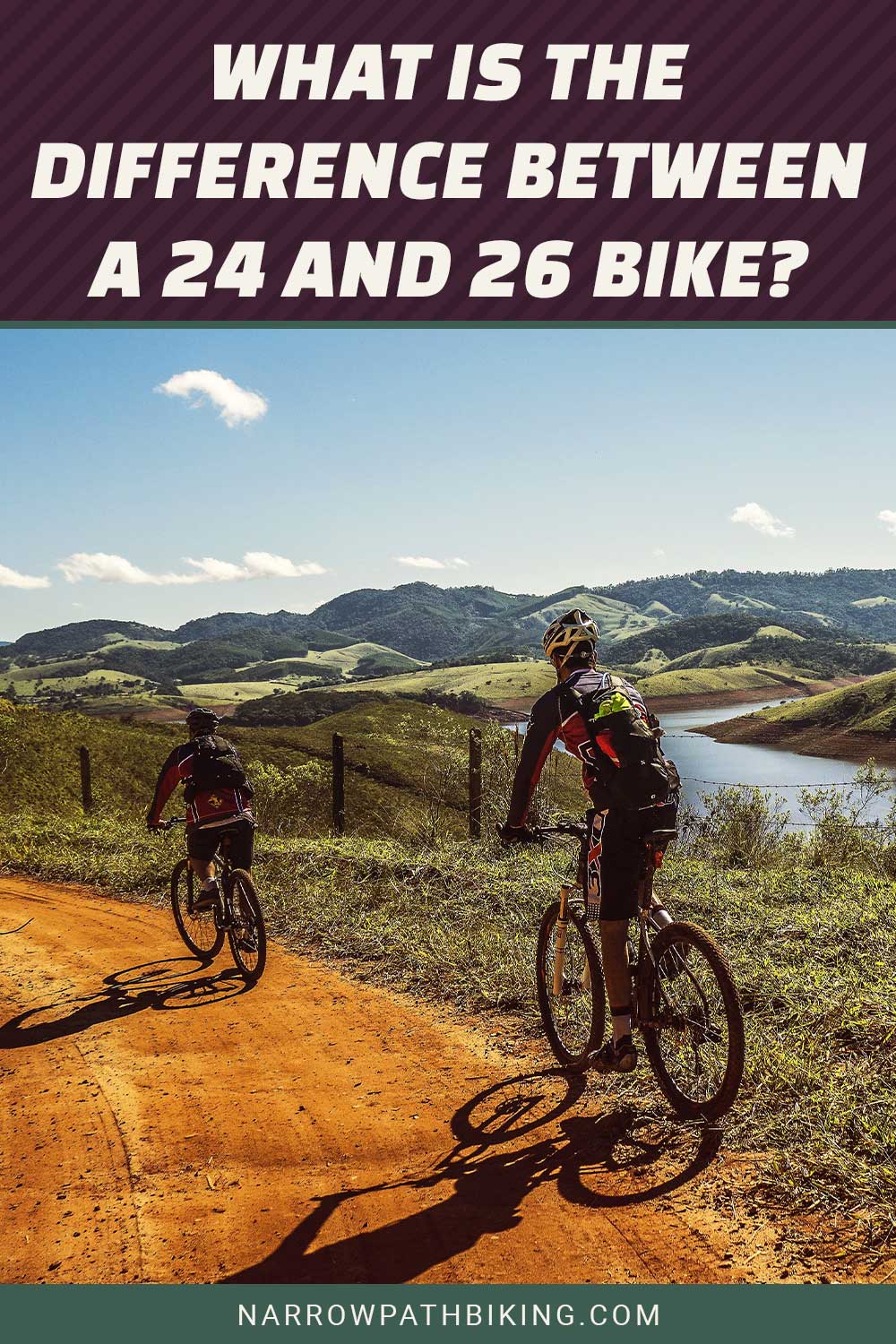When you’re looking at investing in a mountain bike, one of the most important things to look at is the tire size.
The tire size plays a role in not only the ride’s comfort but also the bike’s overall geometry. There are many options, but most mountain bikes are common with either a 24-inch or 26-inch tire.
The difference between the two is the size in general. With two more inches, the bike will sit higher off the ground, and that means that the 26-inch is better suited for taller individuals.
But that isn’t necessarily always the case.
So let’s take a look at the difference between a 24 and a 26 bike and the pros and cons of each type of tire. Hopefully, with this knowledge, you’ll be able to make a decision that makes your ride that much better.
How Much Smaller is 24″ compared to 26″?
Before deciding which bike to go with you, you need to understand the difference. The 24-inch bike is outfitted with 24-inch tires. That means that it’s going to have two inches less in circumference than the 26-inch bike.
This means that it may sit lower, and the frame may be a bit more condensed. Ideally, the 24-inch is typically good for people of a shorter nature, while the 26-inch is for average too, tall individuals.
What are the Pros and Cons of a 26″ Bike?
So now that you have a basic idea of the size differences between the two options, let’s really dive deep into the positive attributes and negative attributes of each of them here. We’re going to start with the larger of the two, the 26-inch bike.
Here are the pros and cons:
Pros
- Good rotor clearance
- Enhance stability
- Perfect for mountain biking or trails
- Excellent top speed
- Mount obstacles with ease
Cons
- Heavier frame
- Pricey
- Longer spokes and weaker wheels
What are the Pros and Cons of 24?
Now that you have an idea of the pros and cons of the 26-inch bike, we can take a look at the smaller model. Again, understanding the positives and negatives of each will allow you to make better decisions in the long run.
Here are the pros and cons of the 24-inch bike:
Pros
- More speed
- Great for beginners
- Lightweight and good for stunts
- Easily maneuvered
- Budget-friendly
- Portable
Cons
- Doesn’t go as fast
- Unable to mount objects
- Reduced availability
Which One is Sold More?
When it comes to which option is sold more, it is more likely that you will see a 26-inch bike than a 24-inch bike. Most often, the 24-inch is seen when you’re dealing with bikes that cater to small adults or children.
The 26-inch bike is more common in everyday life as they tend to be available in stock bikes you can purchase in stores. That doesn’t mean that they are better. It just means that it is more common for them to be sold.
How Tall You Have to Be For a 26?
What are the biggest factors in what size tire and bike you should use is your height? For those looking at a 24-inch bike, you should measure between 4 feet 5 inches and five feet 5 inches.
This is why the 24-inch bikes are much more suited for smaller adults and children.
Regarding the 26-inch bike, this is more of the average option period that offers a lot of availability and improved stability compared to the 24-inch bike.
Those looking at a 26-inch bike should measure between 5 feet 5 inches and six feet 4 inches. (For those taller than six feet 4 inches, you may have to look to get special bikes.)
Final Thoughts on the Difference Between a 24 and 26 Bike
So the main difference between a 24-inch bike and a 26-inch bike is the tire size. The 24-inch is going to be a little bit smaller and compact and perfect for those of smaller stature.
If you’re someone who is average height and looking for a good bike, then we highly said I should go for the 26-inch bike. We hope that this quick info guide was helpful in figuring out which bike is best for you.

